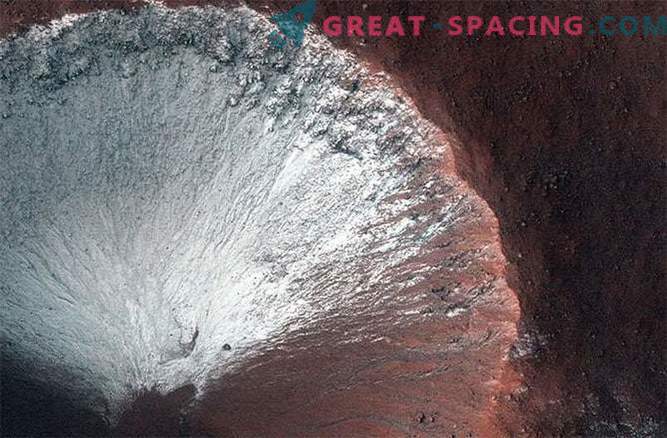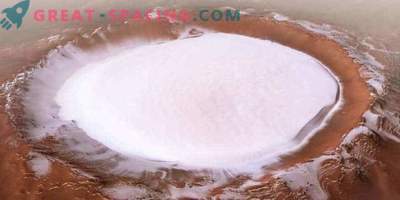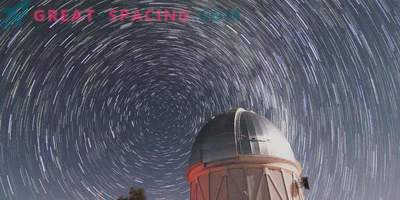
Today is, and tomorrow is not: the shining layer of frost on the surface of the crater is defeated by the spring sun. This phenomenon was recorded by HiRISE - a camera aboard a Mars Reconnaissance Orbiter (MRO), one of NASA’s most expensive cameras.
The image depicts a crater with a width of 1 km (0.6 miles) located in the southern hemisphere. Its north side is covered with frozen carbon dioxide - dry ice. The HiRISE camera captured the image on June 28, 2014, from a distance of 248.8 km (155.5 miles) during the winter in the southern hemisphere on Mars.
A few months later in the spring, the camera transmitted another image of the same area. Look, the frost disappeared from the walls of the crater, and the snow blanket surrounding them evaporated back into the atmosphere.

Images like these demonstrate the importance of long-term planetary expeditions, such as the MRO.
A single snapshot of a region on Mars or Saturn, Titan, Pluto, or somewhere else does not provide a complete picture of everything that happened during the year.
Re-inspection is specifically designed to record seasonal changes, such as: icing and evaporation of ice, as well as natural phenomena: mudflows and avalanches. Such a quick re-survey makes it possible to determine the slightest changes in the studied place. The year on Mars is 687 Earth days - approximately 2 years and 1, 5 months. With the onset of October, it was noticeable that the crater began to again become covered with frost, since the onset of winter in the southern hemisphere, when carbon dioxide in the atmosphere of Mars began to freeze.
HiRISE is a tool capable of transmitting high-resolution images on board an MRO. It is managed from the University of Arizona. The camera transmits details from the orbit of Mars with an accuracy of 1 meter.
MRO (Mars Reconnaissance Orbiter) - the orbiting satellite of Mars arrived on Mars in March 2006 from the Atlas V rocket, which was launched from Cape Canaveral on August 12, 2005. He completed his main mission in 2008, now he performs his second extended expedition. One of its goals is to explore new areas of interest on Mars, as well as to observe seasonal changes.











































